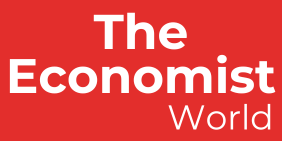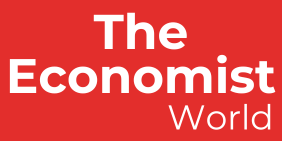China’s economy grew a robust 5.4 per cent in the first quarter of this year as producers frontloaded exports to beat a blitz of tariffs from US President Donald Trump that threatens to decouple the world’s two largest economies.
The official GDP figures, released by China’s National Bureau of Statistics on Wednesday, matched the year-on-year growth rate in the fourth quarter despite Trump’s first salvo of additional 20 per cent tariffs taking effect.
The growth exceeded Beijing’s full-year target for 2025 as well as the 5.1 per cent forecast by analysts in a Reuters poll.
But economists expect China’s economy to come under pressure as the full US levies take force.
The economy had a “good start” in the first quarter, said NBS deputy commissioner Sheng Laiyun.
But he warned that “the current external environment is becoming increasingly complex and severe, the driving force for domestic effective demand growth is insufficient and the foundation for the economy to continue its rebound and improvement still needs to be solidified”.
Chinese markets declined, with Hong Kong’s Hang Seng index falling 2.5 per cent while mainland China’s CSI 300 index shed 0.9 per cent. The renminbi weakened 0.15 per cent to Rmb7.326 a dollar.
China on Wednesday rejigged its trade negotiating team ahead of potential talks with the US over tariffs, naming its representative to the World Trade Organization, Li Chenggang, as its top official.
Li, who was educated partly in Germany, is replacing Wang Shouwen, who served in the role from July 2022.
Li “is a lawyer by training, which positions him better than Wang Shouwen to handle the complex legal issues that are emerging in the current negotiations”, said Henry Gao, professor of law at Singapore Management University.
The change “demonstrates China’s willingness to delve into legal intricacies during negotiations, suggesting a strategic approach to resolving the ongoing trade war”, he added.
Beijing has set what analysts have described as an ambitious growth target of 5 per cent for this year, which policymakers have pledged to back with stimulus measures, funded by a record budget deficit target for the central government.
But economists have downgraded their forecasts in the wake of Trump’s trade war, with Morgan Stanley cutting its estimate for China’s 2025 GDP growth from 4.5 per cent to 4.2 per cent. UBS projects the economy will grow just 3.4 per cent, and Goldman Sachs forecasts 4 per cent growth.
“China needed to get off to a strong start in the first quarter to have any chance of hitting the full-year target,” said Lynn Song, ING’s greater China chief economist.
Higher industrial production in the first quarter could “also partly [be] due to just frontloading” exports to the US, he added, “so we’ll have to see how the next couple months unfold”.
Goldman analysts said they expected “China’s sequential growth to fall meaningfully” in the second quarter “due mainly to the strong headwinds from increased US tariffs and potential payback effects from previous export frontloading”.
Trump has imposed a total of 145 per cent additional levies on Chinese goods, although he granted what he said would be temporary exemptions on products such as smartphones and electronics. China has responded with retaliatory duties of 125 per cent.
Beijing and Washington stepped up their rhetoric in the trade stand-off this week. Trump on Tuesday said China “needs to make a deal with us”.
“We don’t have to make a deal with them,” he added. “They need our money.”
Later, he said “the ball is in China’s court” to start talks.
But Xia Baolong, director of the Hong Kong and Macao Affairs Office, said China would not be intimidated.
“The Chinese people have persevered through hardships, and anyone who attempts to drag us back to a state of poverty and weakness is our enemy,” he said.
The Chinese growth figures come as households struggle to recover from a deep property slowdown that has damped consumer sentiment and domestic demand.
The NBS on Wednesday said retail sales rose 5.9 per cent last month against a year earlier, beating the average analyst forecast of 4.2 per cent and a reading of 4 per cent for the January-February period.
March industrial production was up 7.7 per cent from 5.9 per cent in January-February, also beating analysts’ forecasts.
Recommended
In the face of deflationary pressures from weak household demand, Chinese policymakers have leaned on manufacturing and exports to drive growth. The country reported a record global trade surplus last year of nearly $1tn despite increasing tensions with its trading partners.
Figures released on Monday showed exports rose 12.4 per cent in dollar terms in March on a year earlier, the biggest rise since October, while imports fell 4.3 per cent.
NBS’s Sheng said the rapid growth in exports despite the increase in tariffs and trade restrictions since February demonstrated China’s “resilience”.
“We have a rich toolbox of policy options, ensuring that we can respond to external shocks and challenges,” he said.
Data visualisation by Haohsiang Ko in Hong Kong





